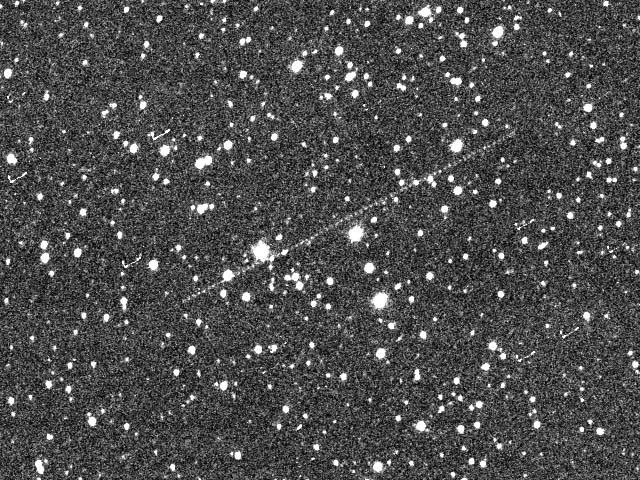
Cal Poly 18 Bulletin 12
2012-06-30 An Asteroid Flyby and Some Ha Images
I made a video to show what the Cal Poly 18 looks like and how it moves. You can view it on YouTube at: http://youtu.be/gBbW4nzb4T4. The first segment shows me rolling off the shed. As that segment ends, you see me The second shows the scope's behavior when it is first powered up. The third segment shows the telescope slewing under hand-pad control.
At the ends of several of the slews, the telescope "bounces." When you slew manually, the telescope doesn't "know" ahead of time when you're going to take your finger off the button. It overshoots a couple degrees and comes back to the position where you let go of the button. I ran past the limit switches a couple times, and when I did that, the whole telescope shudders because the limit switches call for an instant stop. You could see that happen when I slewed from the zenith to the horizon and overshot.
Under computer control, the telescope decelerates as it approaches the target star. It overshoots by about 3 arcminutes so that it approaches the set point always from the same side, a SiTech concession to telescopes with worm gear drives (and not necessary with direct drive). I put a DMK41 video camera at the focus one night to observe slews in real time, and it settles to the final position within an arcsecond in 2-3 seconds. When I push the SiTech "jog" buttons to move it 2 arcminutes, it bounces a lot because it overshoots by 3 arcminutes and then approaches always from the same side, and then settles. Position control is very active. If you push on the telescope with your hand, it pushes back against you. It feels about like gently pushing on a 70-pound dog. As soon as you let go, it settles back where it wants to be. The horrible background roar is traffic; the science-fictiony "yawng-yawng" is the sound the Cal Poly makes.
I'll start with the fun stuff: Here are two images of the flyby of asteroid 2012 LZ1. The 500-meter chuck of rock went by on July 12-17 at a distance of about ~3 million miles. The first image is a average stack of 70 exposures of 5 seconds each spaced 5 seconds apart, taken July 15 at ~3:45 a.m. The asteroid was pretty bright -- 14th mag -- but since each frame is averaged with 69 others, the images in the stack look rather weak. I was able to identify the asteroid by landing on the field and looking for a moving object.

Below is 2012 LZ1 again, but this time you see three consecutive 60-second exposures started 60 seconds apart. The red/green/blue color coding is arbitrary; no filters were used in making the image. The faint red streak is probably a geosynchronous communications satellite.
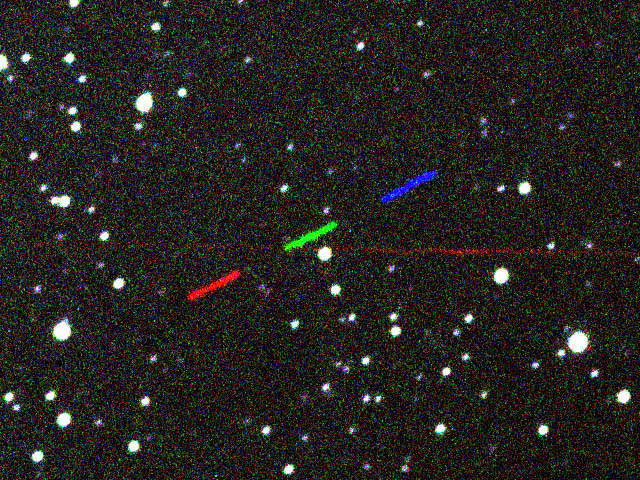
Below is Abell 1656 (the Coma Cluster of galaxies), captured in 17 2x2-binned images of 300 seconds exposure each. The seeing wasn't very good, but there are hordes of faint galaxies, more galaxies, in fact, than there are stars in this image.
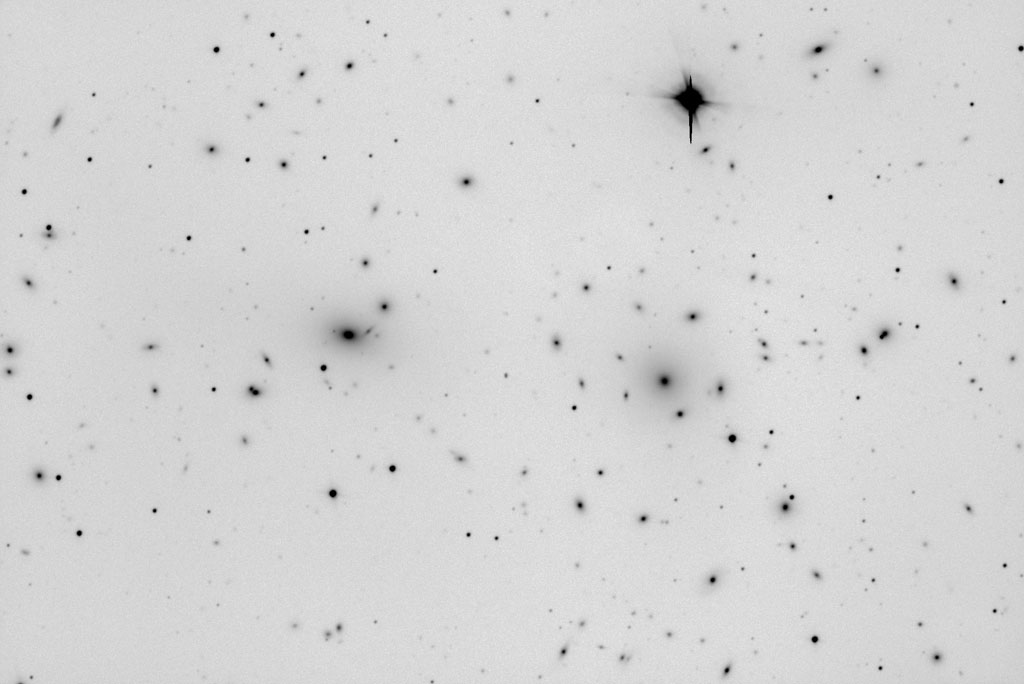
To see what happens in real time when the telescope slews and jogs, I put my DMK41 industrial video camera at the focus and made movies. Below is a single frame-grab showing the moon's surface. The original images appear mushy, but I applied wavelet processing to make a semi-respectable image that goes from Copernicus to Aristarchus, and even shows bits of the Ariadeus Rille.
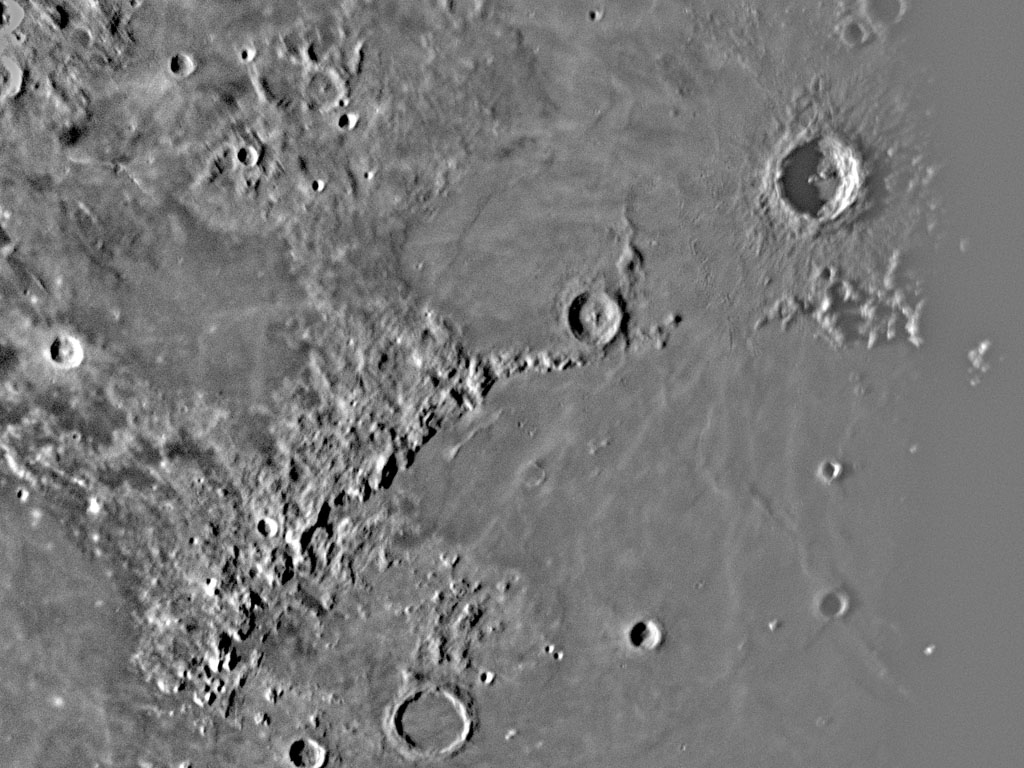
Below is an Ha "snapshot" of the Lagoon nebula. The exposure is 60 seconds, and this rather ghost-like rendition is what you get.
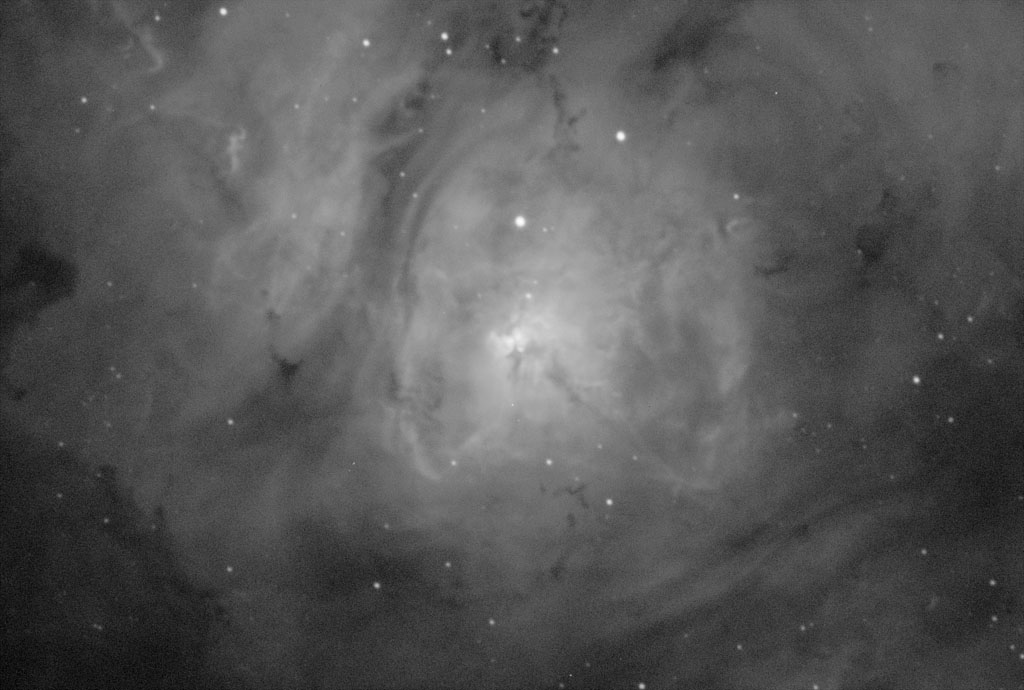
Another Ha "snapshot," this one the Eagle Nebula.
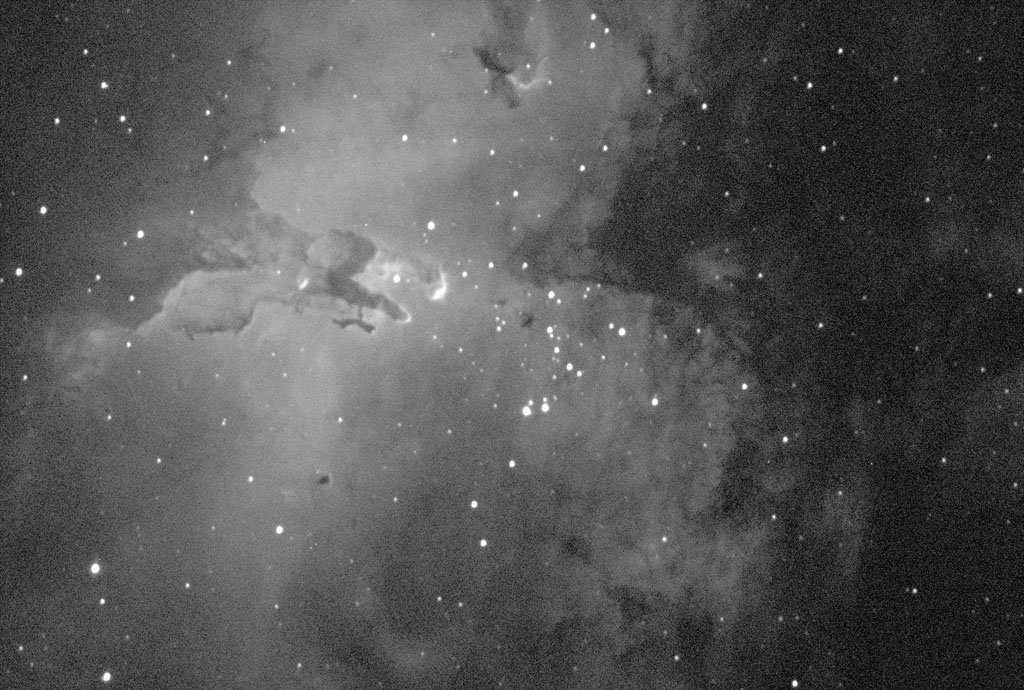
And finally, the Omega Nebula. Doing Ha "snapshots" is FUN!
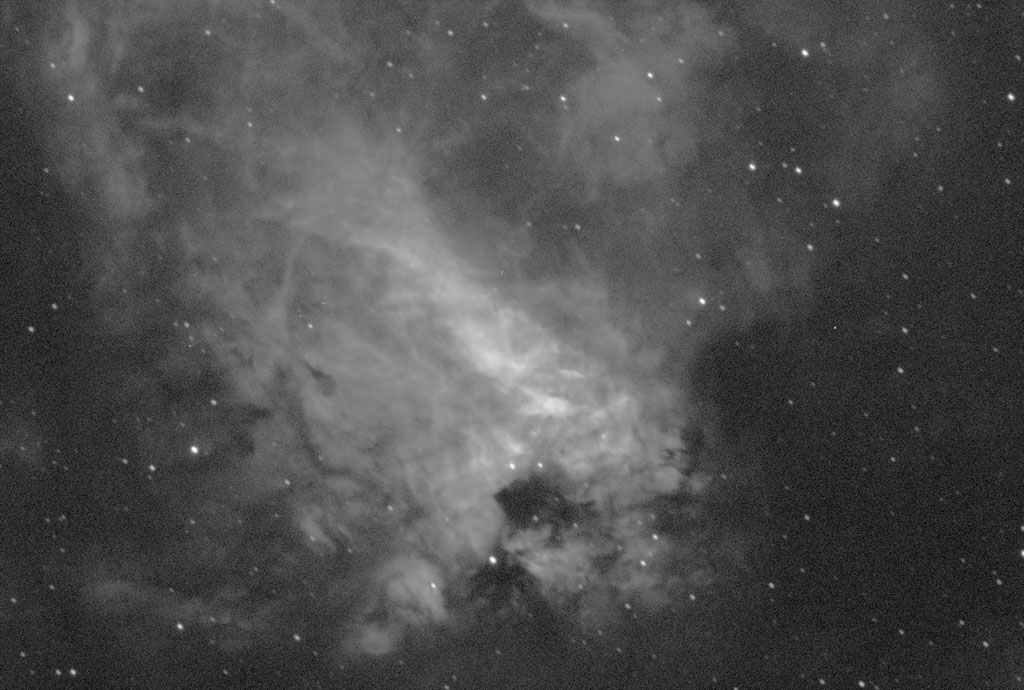
Now for a diametrically opposite approach to Ha imaging: 102 2x2-binned exposures of 60 seconds each. The camera rotator had gotten itself stuck at 360.999 degrees, and it would not reverse. Rather than power down everything, I just allowed the field to rotate and made lots of short exposures. I stacked them in AIP4Win using two stars to derotate and align the images. The soft negative non-linear rendition of the image shows the full dynamic range of the nebulae. Below this image is a more conventional positive view that burns out the bright areas.
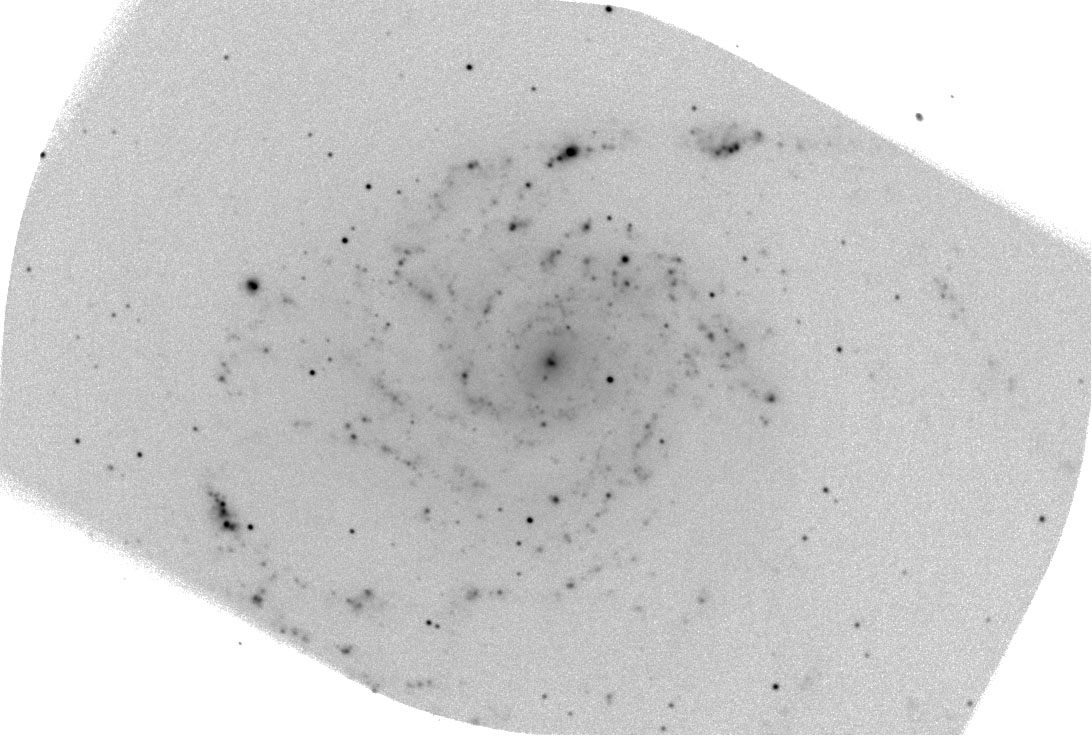
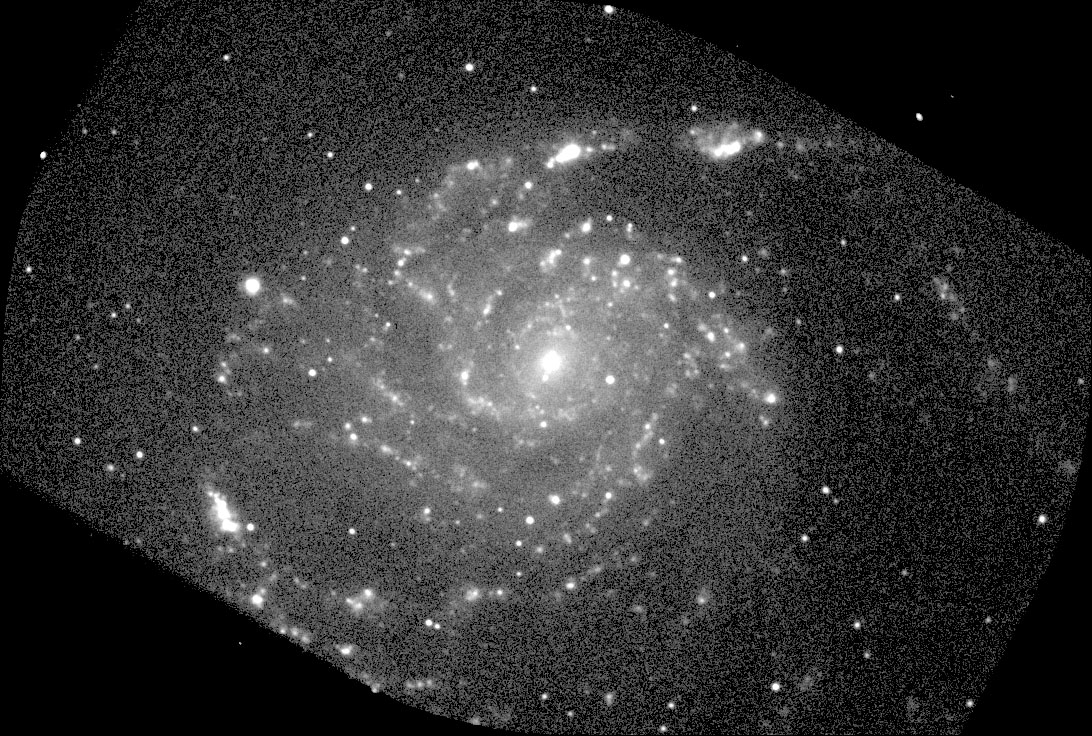
Gotta do color once in a while. Here's M27 in RGB color, taken on a night when the seeing was poor and the Cal Poly was inexplicably not tracking well. You can see the northward elongation of the images.
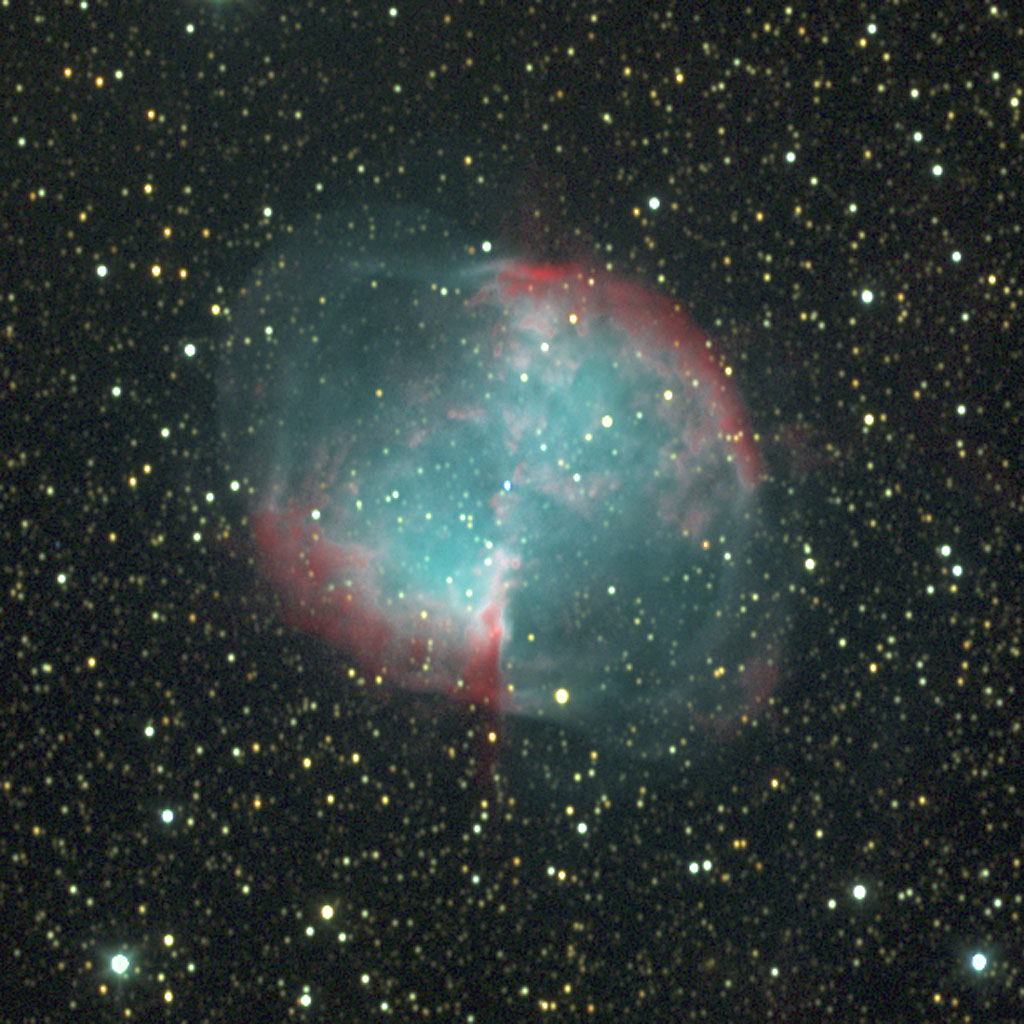
For comparison, here's a deep image of M27 in Ha. The familiar nebula we all recognize is enveloped in an exterior shell from a prior episode.
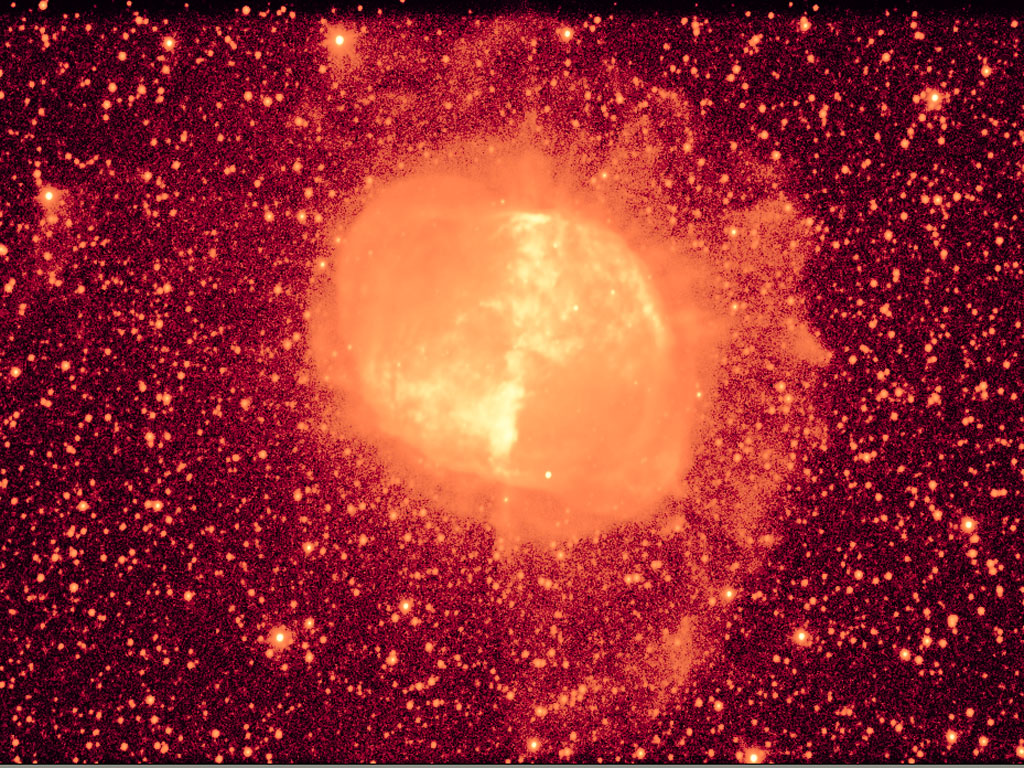
Finally, I've been trying to get to the bottom of the Cal Poly's "soft image" problem. It's strongly temperture related, beginning with really bad images in the early evening, that progressively improve over time. I took the top series below using the autofocus routine with 2x2 binning and a step size of 0.02 inches. The focus value, xxxx, is embedded in the file name: FOCUSxxxx.cropped.FIT. Usually I roll off the shed as soon as the telescope is not baking in the sun, and I plug in the fans. What I did was to delay rolling off the shed until after dark, then I rolled it off and as soon as possible, I took this series.
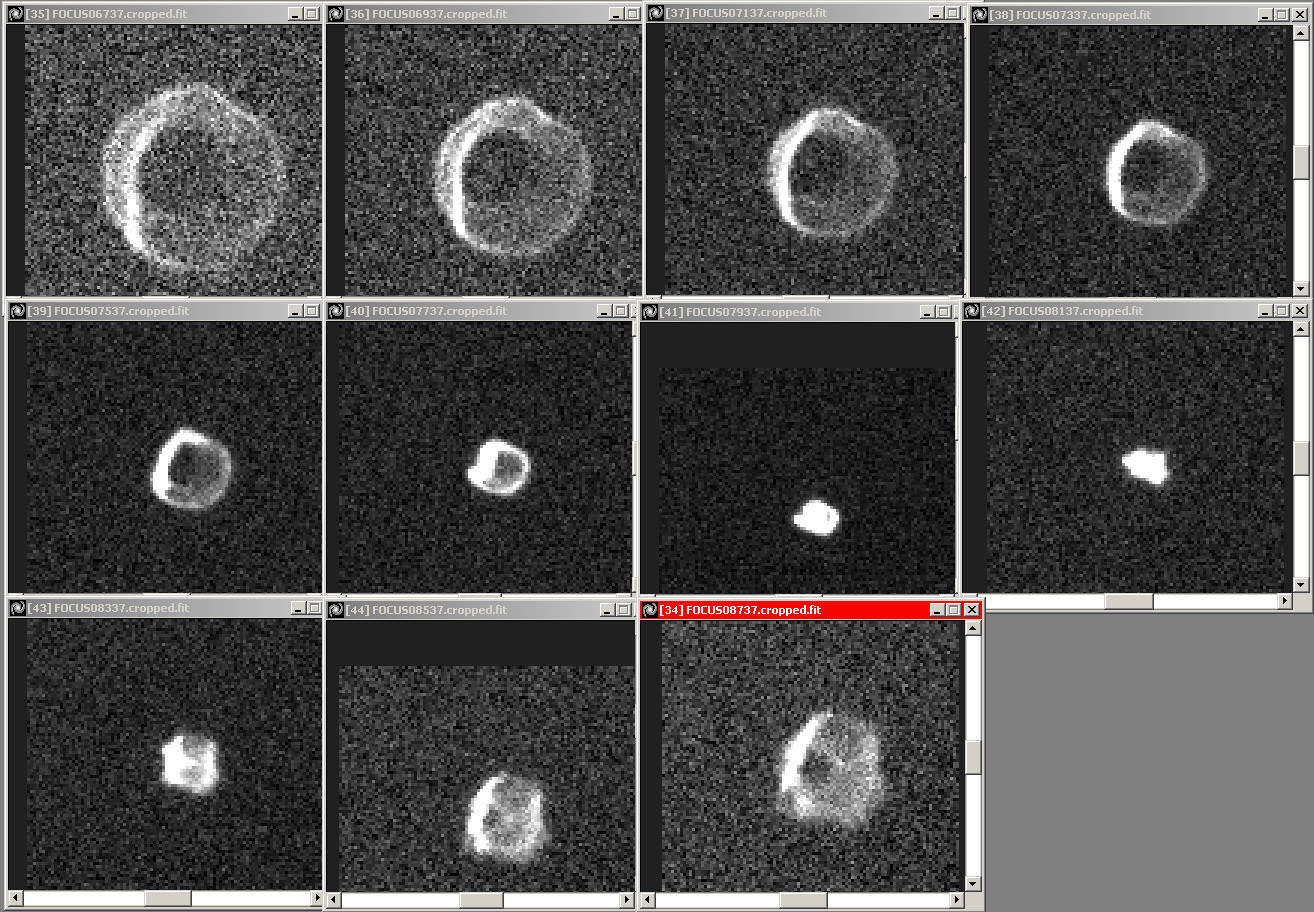
Three hours later I took the series below. The binning is 1x1, and the focus step is 0.005 inches. The images are sized to appear at the same scale on your computer monitor.
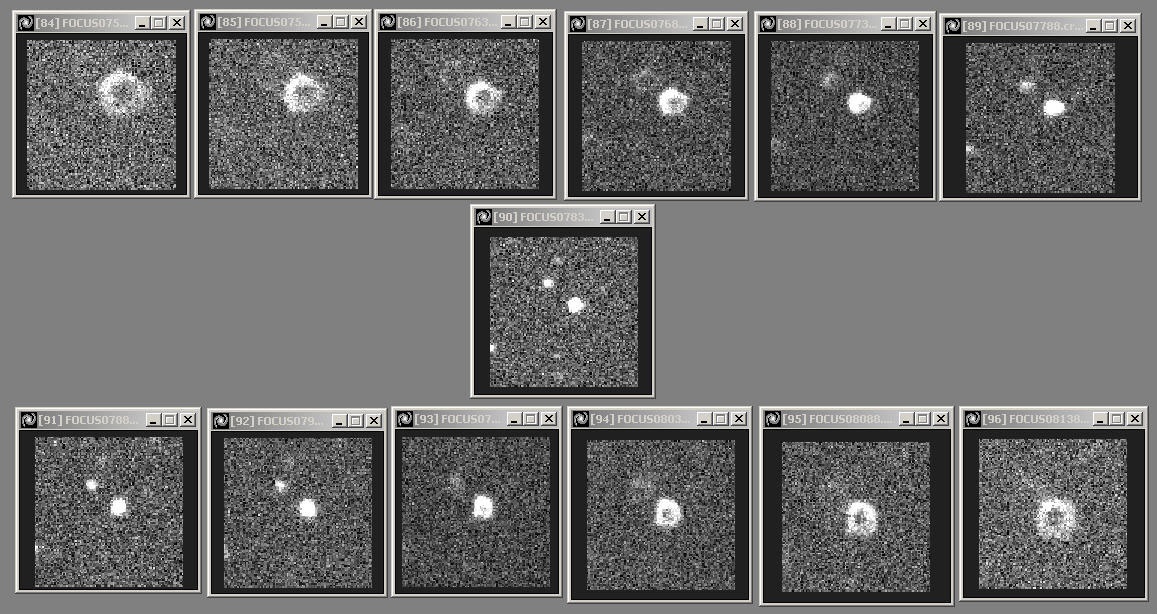
On June 30, I removed the Cal Poly 18 mirror from the tube for bench testing. My plan is to allow the mirror to equilibrate on the test stand at ~25 Celsius, then open the door of my shop and watch its figure as it cools to ~15 Celsius. Although it is difficult to assess the figure of an 18-inch f/4 paraboloid by eye, the image deformation is so strong that if it originates in the primary mirror, I expect to see the figure change. Stay tuned....
This is Cal Poly Bulletin 12
Main CalPoly Bulletin page or go back to Bulletin 11
Return to Richard Berry's Home Page